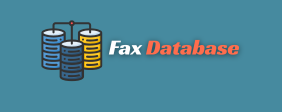Analyzing Core Telemarketing Cost Components
Telemarketing remains a vital outreach tool. Businesses seek to connect with potential clients. Understanding telemarketing cost is crucial for success. It involves various direct and indirect expenses. Effective budget management is key. Mismanagement can lead to significant losses.
Agent wages form a major cost element. This includes base salaries and commissions. Training new telemarketers also adds to expense. Ongoing professional development is important. These human resource costs are substantial. They represent a core investment.
Technology infrastructure is another significant factor. Dialer systems and CRM software are key. Headsets and reliable internet are essential. Licensing fees for software must be considered. These investments streamline operations. They improve agent efficiency.
Data acquisition and list management are costly. High-quality lead lists are invaluable. Poor data wastes valuable agent time. Investing in accurate contact information pays off. It impacts campaign effectiveness. This reduces overall spending per lead.
Leveraging Quality Data to Reduce Telemarketing Costs
The quality of your contact list impacts costs. Targeting the wrong audience is expensive. It leads to low conversion rates. Agents spend more time on unqualified leads. This drives up the cost per acquisition. Accurate data is a strategic asset.
Poor data results in wasted resources. Agents make calls to disconnected numbers. They reach individuals not interested. This inefficiency drains time and budget. It also negatively affects morale. Clean, current data prevents these issues.
Sourcing specialized business email lists is transformative. Such lists offer targeted reach. For example, businesses might need specific industry contacts. A Newspapers (Publishers) Business Email List could be ideal. This targets a niche market effectively. It significantly enhances campaign precision.
Highly segmented data reduces wasted efforts. It ensures calls go to relevant prospects. This improves chances of a successful outcome. Higher conversion rates mean lower overall costs. It optimizes the entire telemarketing process. Strategic data acquisition is paramount.
Strategic Approaches to Optimize Telemarketing Budget Allocation
Optimizing a telemarketing budget requires smart planning. It goes beyond simply cutting expenses. Focus should be on maximizing efficiency. This ensures every dollar yields value. Strategic allocation boosts overall ROI. Careful planning is essential.
Agent training plays a critical role. Well-trained agents are more effective. They handle objections skillfully. Their closing rates are often higher. Investing in training reduces the need for more calls. This lowers the cost per successful contact.
Script development and refinement are crucial. A compelling script guides conversations. It ensures consistent messaging. Regular testing helps improve effectiveness. Dynamic scripts adapt to prospect responses. This leads to productive interactions. It reduces call duration.
Efficient call routing systems save time. These systems direct calls to the best agent. This minimizes hold times for prospects. It also matches agents with suitable leads. Such optimization improves customer experience. It ultimately lowers operational costs.
Measuring Return on Investment in Telemarketing Cost Management
Measuring ROI is fundamental for telemarketing. It assesses campaign’s financial viability. Understanding what works saves future costs. Key performance indicators must be tracked. This includes lead generation and conversion rates. ROI insights drive better decisions.
Cost per lead (CPL) is a vital metric. It calculates expense for each new lead. Cost per acquisition (CPA) is even more critical. This measures the cost for each closed deal. Lowering these metrics indicates efficiency. Regular analysis improves outcomes.
For specialized sectors, ROI measurement is distinct. Consider nuanced needs of specific industries. Optimizing Telemarketing Strategies for Insolvency Firms: Reaching Businesses in Distress offers insights. This niche requires sensitive, targeted approaches. Effective strategies here maximize limited resources. It shows the value of tailored campaigns.
Analyzing campaign data provides actionable intelligence. Identify successful scripts and agent techniques. Pinpoint areas needing improvement. This iterative process refines strategies. It consistently works to reduce telemarketing cost. Data-driven adjustments lead to higher returns.
Future Trends Impacting Telemarketing Operational Costs
The telemarketing landscape is always evolving. New technologies are constantly emerging. These innovations affect operational costs. Businesses must adapt to stay competitive. Staying informed is essential for planning.
Artificial intelligence (AI) is transforming telemarketing. AI can automate initial lead qualification. It also assists agents with real-time information. This reduces manual tasks. AI integration can lower agent workload. It could lead to significant cost savings.
Regulatory changes also influence expenses. New data protection laws impact outreach. Compliance costs can increase significantly. Businesses must invest in legal adherence. This ensures ethical operations. Staying compliant avoids hefty fines.
